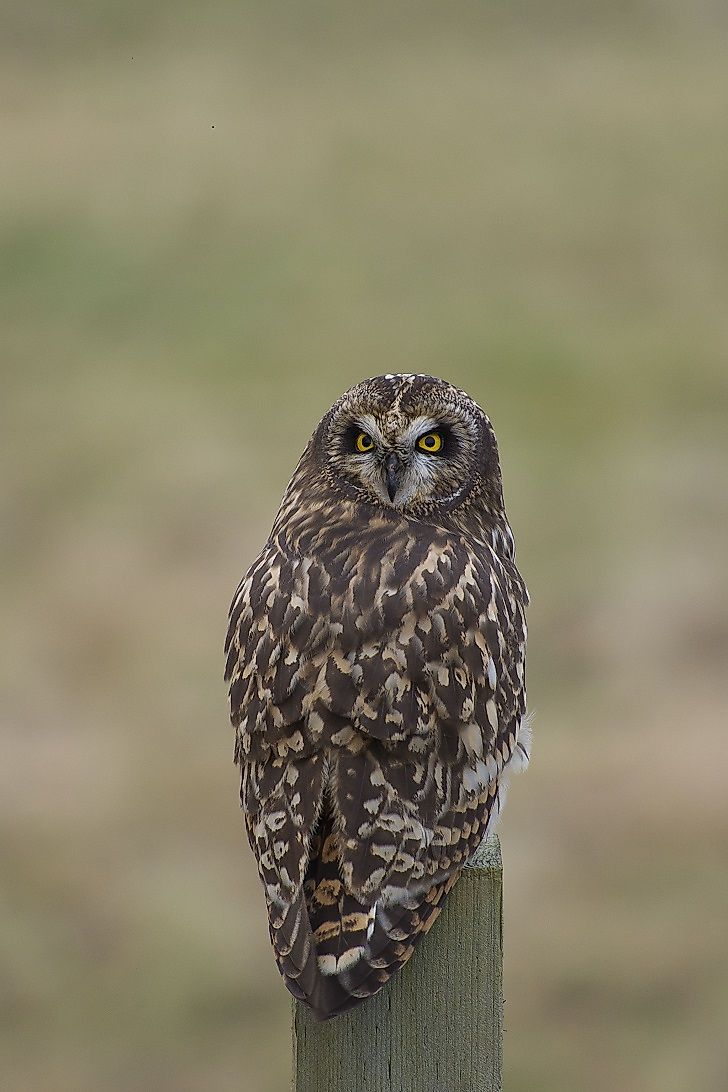Short-Eared Owl Facts: Animals of North America

5. Physical Description
Typically identified by its mottled brown and yellow white streaked feathers and prominent ears, the Short-eared owl has the scientific name Asio flammeus, and belongs to the Family Strigidae. They are medium-sized birds with rather large eyes, equally large round heads, and thin-streaked, white-colored chests. It is quite similar to the long-eared owl, especially in flight. The major differences between them and Short-Eared Owls is that the color of the latter is much lighter, and the respective lengths of the ears are well distinguishable from one another. The common observer will find it a bit of a challenge differentiating the male from the female species, although the female is larger in size.
4. Diet
The Short-eared owl feasts on mammals and birds smaller than itself. These include moles, ground squirrels, and rats, as well as the ubiquitous shrew. Voles are a particular favorite, which are tiny burrowing rodents considered as pests by many farmers. The Short-eared owl prefers to hunt for its food during the night, although some have been found to be actively feeding at dusk and sometimes even during the day. Because their prey is found in open fields, these birds do not need to fly very high. Its feet are well adapted for swooping down, and this owl is bold enough to fight for its food, even against other Short-eared owls.
3. Habitat and Range
The Short-eared owl is quite ubiquitous, meaning it could be found almost everywhere in the world, especially in North and South America and some parts of Eurasia. It lives in areas where its food is found in greatest abundance, such as in marshes, wide open woodlands, meadows, bogs, and savannahs. Although Short-eared owls are by no means globally threatened, in some parts of the United States and Mexico their numbers have been diminished, particularly in Ohio, Minnesota, and Illinois. It doesn’t help such local populations' numbers that these birds live nomadic lives, and will leave those habitats most vulnerable to destruction. The International Union for the Conservation of Nature has classified Short-eared owls as a species of "Least Concern", although in the U.S. state of Michigan they are considered "Endangered". Short-eared owls benefit humans in that they help control populations of such pests as voles and mice, which are destructive to human farms and gardens.
2. Behavior
Short-eared owls are solitary hunters, although at some points during the year they may live with other birds in a shared roost. They are rather aggressive when it comes to their food, even going so far as harming other birds to secure it. Their acute sense of hearing, paired with their excellent vision, helps them forage for food at dusk and during the night, making them into highly effective nocturnal predators. During the winter season, Short-eared owls migrate towards the south, leaving their nests and habitats susceptible to the encorachment of other predators.
1. Reproduction
Because Short-eared owls live solitary lives, unless they are hunting they are able to consider other birds of the same species as potential breeding partners rather than as competition. Males flap their wings to get the attention of the females, often times even bringing food as a sort of courtship offering. Experts think these birds are monogamous and stay with one partner, and they usually breed during the summer when their food supply is most abundant. In some cases, some pairs will produce young ones during winter, although this depends on the availability of food sources around their chosen nest sites. The female Short-eared owl is tasked with feeding and protecting the nestlings, and usually hatches about 5 to 6 eggs at once. The male, on the other hand, protects the nest and hunts for food, often staying with its mate until the young ones are able to support themselves.











